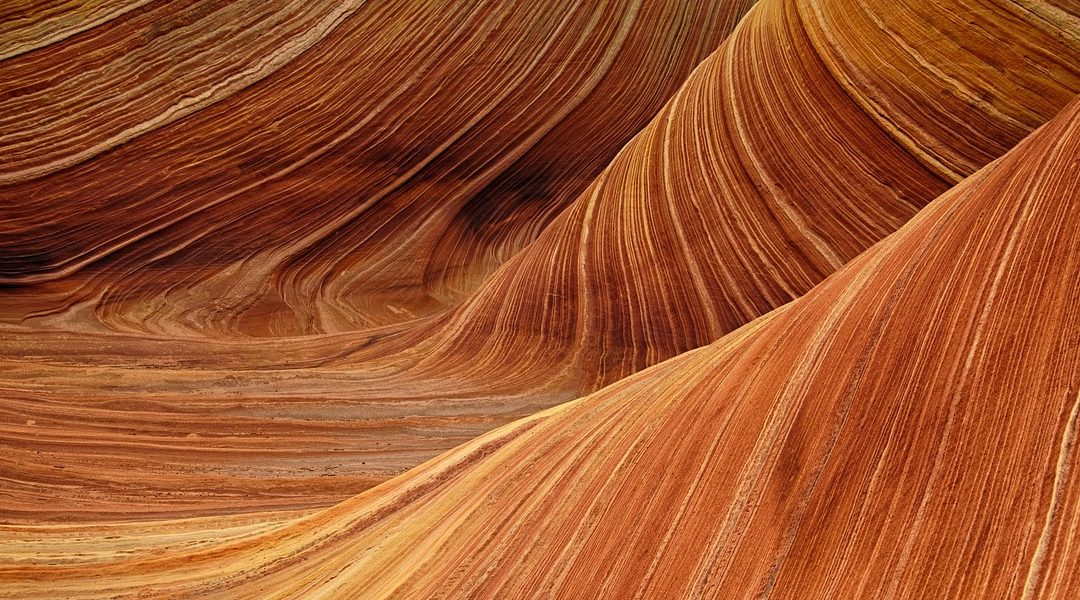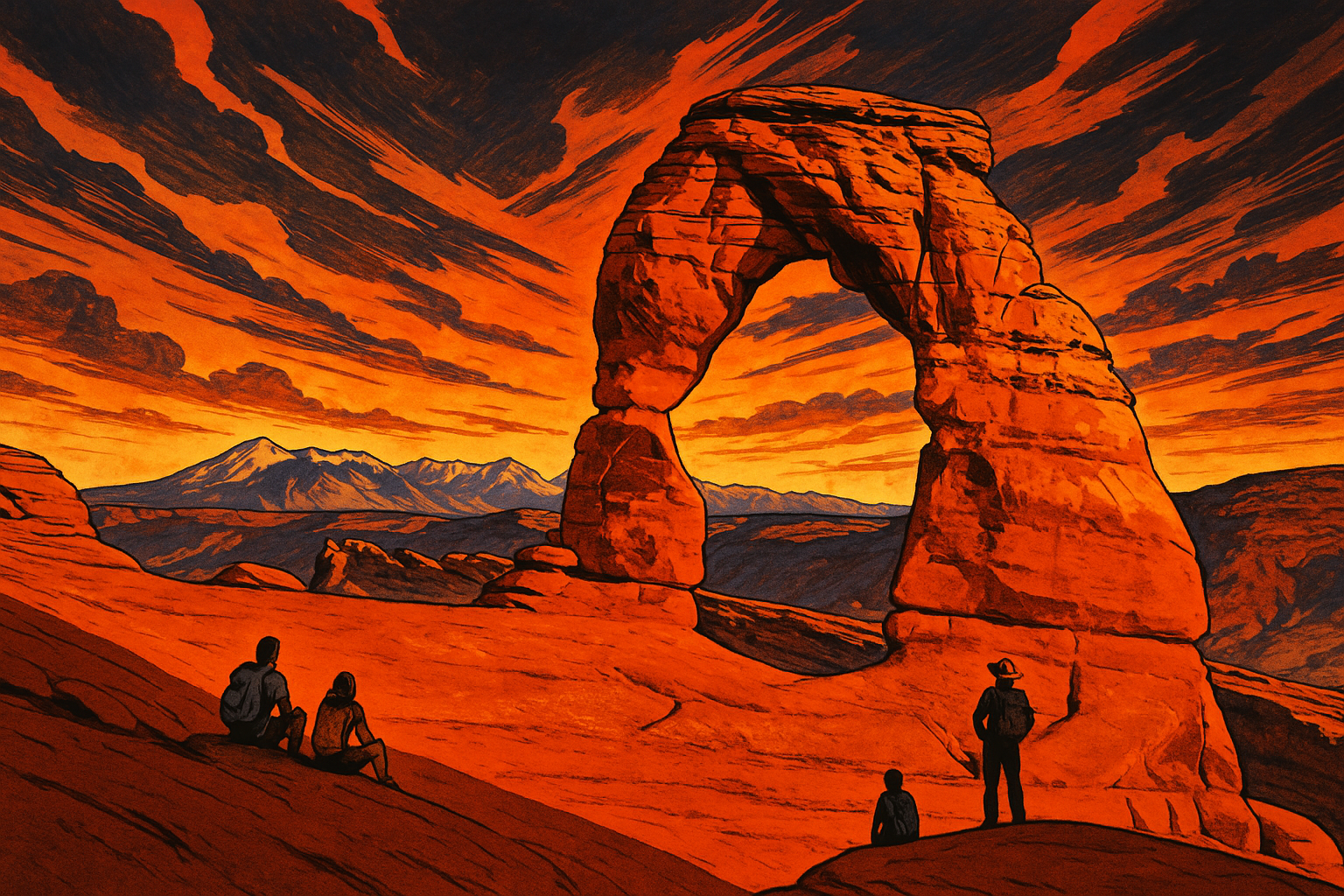How Was Utah’s Most Iconic Arch Formed?
If you’re standing beneath Delicate Arch at sunset, framed by the La Sal Mountains, you’re not just witnessing a postcard—you’re staring at a 200-million-year geologic story carved in stone. In this post, I’ll walk you through exactly how Delicate Arch formed, in terms you can actually picture. I’ll also highlight what that formation means for hiking, photography, and planning your visit to Arches National Park from Moab.
You’ll learn:
The deep history (think salt domes, faults, sandstone layers)
The processes (weathering, erosion, collapse)
Why Delicate Arch is “delicate” and someday will vanish
Local insights for seeing the arch from base to skyline
Let’s dive in.
Understanding How Delicate Arch Formed
It deepens your connection to the landscape; you’ll see the arch not as static scenery but as a dynamic landform evolving over time.
Understanding the geology gives you clues about where to hike, where to photograph, and how fragile the site is.
It helps answer questions people always ask: Why is it freestanding? How long will it last? Why are there so many arches around Moab?
Key takeaway: Delicate Arch didn’t just “happen”—it’s the outcome of salt movement, sandstone deposition, fractures, and slow erosion over tens of millions of years.
Geologic Foundations: Salt, Sediment, and Structural Stress
1. Ancient Salt and the Foundation of Arch Country
To truly understand Delicate Arch, you have to begin below the surface—way below. Covering much of what is now the Colorado Plateau was once a sea that left behind massive salt and evaporite deposits. That thick salt bed (part of what geologists refer to as an evaporite or salt diapir) is still “lurking” beneath Moab and Arches National Park. National Park Service+4Dutton Institute+4U.S. Geological Survey+4
Salt is ductile—when buried under great weight it flows slowly (imagine toothpaste being squeezed). As overlying rock mass pressed down, the salt began to deform, bulge, and push upward in places, forming domes or anticlines. Where the salt domed, it cracked the overlying rock layers (such as Entrada Sandstone) into joints (vertical cracks) and fractures. National Park Service+4faculty.epss.ucla.edu+4U.S. Geological Survey+4
The result: a rock “shell” above shifting salt, full of hidden weaknesses and stresses waiting to be exploited by erosion.
Summary so far: Beneath your feet is a legacy of salt motion and structural cracking. Delicate Arch owes its very existence to subsurface movement that primed the rock for later sculpting.
2. Sediments, Sand Dunes & the Birth of Entrada Sandstone
On top of that salt bed, over many millions of years, vast quantities of sediments were deposited—wind-blown sands, floodplain deposits, marine overlays. Among these is the Entrada Sandstone, the geologic “canvas” on which almost all the arches in Arches National Park are etched. National Park Service+4EOS+4U.S. Geological Survey+4
Entrada’s composition is key: it’s not ultra-hard like granite, but rather well-cemented but still vulnerable. This balance gives it the capacity to hold up in thin shapes, but also to erode selectively. Dutton Institute+4EOS+4cnha.org+4
Interbedded with Entrada are portions of the Slick Rock Member and the Moab Member, and contact zones or “partings” between these strata often act as lines of weakness. Delicate Arch itself spans material from Slick Rock at its base to Moab Member in its upper portions. National Park Service+4Utah Geological Survey+4National Park Service+4
Summary: The rock layers that became Delicate Arch were laid down in ancient deserts and coastal dunes, then squeezed and cracked overlying deeper salt movement.
The Sculpting Process: How Fins Became Arches
Once the geologic “stage” was set (salt warping, joints, Entrada deposition), the slow hand of time and weather arrived.
3. Erosion, Water, Freeze-Thaw & Wind
Rock cracks formed because of the structural stresses we mentioned. Over time, water finds its way into these cracks. In Moab’s climate, the freeze-thaw cycle is powerful: water seeps in, freezes, expands, cracks rock further, then melts and seeps deeper. That process is called frost wedging. U.S. Geological Survey+3National Park Service+3Moab Adventure Center+3
Meanwhile, rainwater (often slightly acidic) can dissolve the cementing minerals within the sandstone matrix, weakening rock internally. Wind also plays a continuous role, carrying fine sand grains that act like natural sandpaper over exposed surfaces. EOS+3Moab Adventure Center+3National Park Service+3
As weaker zones erode faster, portions of a sandstone “fin” begin to wear through. At first, alcoves and shallow caves appear along the softer zones or at contact planes (e.g. between the Slick Rock member and the Moab member). EOS+3National Park Service+3cnha.org+3
Eventually a hole punches through, forming a primitive arch. Over time, bits of the ceiling fall away, edges are smoothed, and the arch “morphs” into its final shape. Many other arches in Arches National Park formed this same way. Utah Geological Survey+3Moab Adventure Center+3EOS+3
Summary: Cracks turn into caves, caves become holes, holes evolve into arches under the steady work of ice, water, and wind.
4. Collapse and the Life Cycle of an Arch
Arches are inherently temporary—they exist at a balance point between forces creating them and forces wearing them down. Pieces of rock continue to fall off (especially at the base and ceiling), slowly thinning the structure until collapse becomes inevitable. National Park Service+3National Park Service+3EOS+3
Delicate Arch is already thin in places. As more material wears away, someday (millions of years from now, or perhaps sooner under a rare event) it will fall. The story of Skyline Arch offers a cautionary example. The sudden collapse events have doubled arch size in a single moment in past decades. National Park Service+2U.S. Geological Survey+2
Summary: What you see now is only a moment in time. Delicate Arch will eventually collapse, like many arches before it.
Why Delicate Arch is Freestanding
Not all arches form freestanding. To explain, separate from a wall or cliff. Delicate Arch does. Why?
Because the original sandstone fin that held it was mostly eroded away on both sides, leaving just the skeletal arch standing. U.S. Geological Survey+3Wikipedia+3NPS History+3
The structural joints guided erosion in such a way that the arch’s center remained intact while adjacent rock fell away.
It spans a “line of weakness” between strata (Moab / Slick Rock) that allowed erosion to undercut from below and sides. National Park Service+1
It’s one of the more symmetric and well-cemented examples, so it retained integrity longer than many less optimally formed arches.
In short: Delicate Arch is the remnant, the last standing piece, of a long-lost fin.
What to Expect When Visiting & How Geology Shows in the Hike
Before you lace up your boots, it helps to see how this ancient narrative manifests along the Delicate Arch Trail.
Trail Geology: From Parking Lot to Arch
The trail begins in a terrain underlain by the Morrison Formation (Salt Wash Member), with lighter-colored sandstone in early sections.
As you ascend, you transition onto Entrada Sandstone slabs and ridges with visible joints, cracks, and small fins.
The last ~200 yards are over slickrock sandstone, where cairns guide you across open rock shelves.
Look for cross-bedding, ripple marks, or layers—evidence of ancient dunes or shallow water deposition.
Interpreting What You See
Vertical cracks you notice are the same joints that guided erosion over time.
Thin edges and “windows” in nearby fins are sister formations—remnants of the same sculpting process.
You might see exfoliation cracks or granular disaggregation—signs of slow surface peeling.
Pro tip: Bring a hand lens (10×) or your camera’s macro setting. Look on the underside of ledges or overhangs you can often see “step fractures” forming now.
When to Go & Best Conditions for Observing the Arch
Best seasons: Late spring (April–May) and fall (September–October) are ideal—cool skies, soft light, and manageable crowds.
Time of day: Sunrise and sunset frame Delicate Arch dramatically; especially at sunset, the arch glows red/gold with the La Sals behind.
Weather caveats: Post-storm days bring fresh contrast, but rain can make slickrock hazardous. Avoid hiking when wet.
Crowds & reservation rules: Between April 1 and October 31, timed entry and advanced reservations are required to enter Arches between 7 a.m.–4 p.m. Be aware the Delicate Arch parking lot often fills early.Wikipedia+2NPS History+2
FAQs: Quick Answers to Common Questions
Q: How old is Delicate Arch?
The Entrada Sandstone was deposited during the Jurassic (~140–180 million years ago), but the arch as we know it likely emerged in the last few million years of erosion.faculty.epss.ucla.edu+3EOS+3U.S. Geological Survey+3
Q: Why is it called “Delicate Arch”?
Because of its slender, delicate proportions. Early local names included “the Chaps” or “schoolmarm’s bloomers.” Its current name was adopted in 1933–34 by Frank Beckwith’s expedition.Wikipedia+1
Q: Could Delicate Arch collapse soon?
“Soon” is relative—geologically speaking, it has likely tens to hundreds of thousands of years left if nothing dramatic occurs. But collapse is inevitable; erosion never stops.EOS+3National Park Service+3U.S. Geological Survey+3
Q: How many natural arches are in Arches National Park?
Over 2,000 documented natural arches.Wikipedia+2cnha.org+2
Q: Can you climb on Delicate Arch?
No—climbing or touching named arches is prohibited to protect the fragile rock.Wikipedia+1
Final Thoughts & Call to Adventure
Standing beneath Delicate Arch, you’re stepping into a story billions of years in the making. The salt shifting, the sand flowing, the crack widening, the rock giving way—you become part of a grand narrative where even a quiet footstep contributes.
Next time you visit Moab and hike out to the arch, look not just at it—look through time. Notice the joints, the thin edges, the subtle curvature. Think about what future generations will see: perhaps a fallen span, or maybe something new rising elsewhere.
If you’re planning more Moab adventures, I’d love to send you along to:
Trail guides on other blockbuster hikes (e.g. Delicate Arch by moonlight, Landscape Arch via Devil’s Garden)
Canyoneering adventures via CanyoneeringMoab.com
Dining tips after your hike via EatingMoab.com
River trips when you want a break from red rock via RaftingMoab.com
Get your boots dusty, your eyes ready, and your camera in hand. The rock is waiting.

